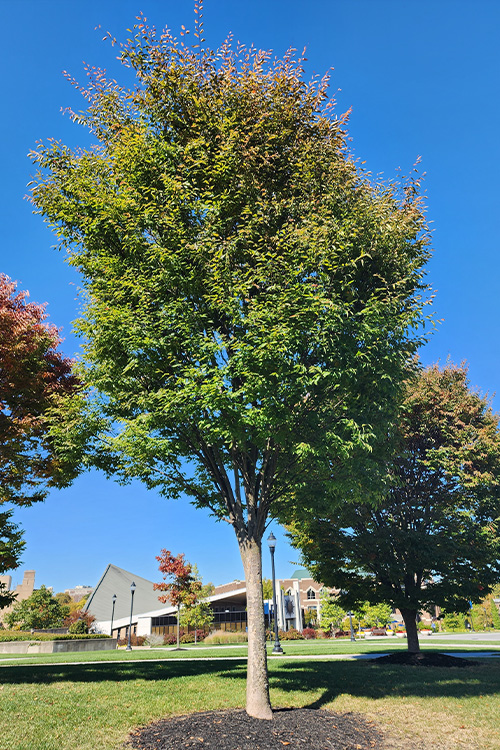Zelkova
Zelkova serrata
Overview
The Zelkova tree, also known as the Keaki, was introduced to America from eastern Asia in 1862. Once mature, this tree can grow up to 80 ft tall with branches spanning up to 75 feet. The Zelkova's branches are perfect for shade and decoration with it's upward leaning branches. This tree features small, green leaves with rugged edges that change into warmer colors during the fall season. When young, the Zelkova takes on a vase shape and becomes more rounded with age.
Cultivation
The Zelkova thrives when placed in full sunlight within acidic, slightly alkaline, and well-drained soils. While this tree is similar to the American Elm, the Zelkova is mostly resistant to the diseases that typically plague Elm trees. However, when the trunk is damaged it may be more susceptible to canker diseases. Additionally, it can tolerate drought and salt.
Biodiversity Sustained
Zelkova trees support a range of wildlife species, including birds like warblers and woodpeckers that use them for nesting and foraging, various insects, such as pollinators like bees and butterflies, small mammals like squirrels and raccoons that find shelter and food in their branches, and urban wildlife in city environments.
On Xavier's Campus, over the Next 20 Years, this Tree will:
Stormwater Runoff Intercepted: 4,344-7,044 Gallons
CO2 Reduction: 2,423-3,901 lbs
Rainfall Intercepted: 26,731-42,917 Gallons
Environmental Benefits (in US dollars) Over the Next Decade: $158-$244
